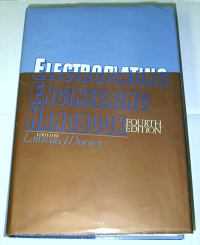
-----
In electroplating, What is a 'Strike Solution'?
A "strike solution" in general is a thin layer of plating which is not satisfactory as a finish on its own but is used to help make a subsequent layer of plating better.
An example is the Wood's Nickel Strike, which is usually the first layer applied whenever we plate onto stainless steel. Stainless steel oxidizes essentially instantly, and most plating solutions will exhibit poor adhesion when plated onto an oxide rather than raw metal. The Wood's Strike is very acidic and low in nickel content, and is able to dissolve the oxide on the stainless steel while simultaneously plating a thin layer of nickel onto the raw stainless surface with excellent adhesion.
Like any other slang, however, it's impossible to hold "Strike" to an exacting definition. As an example, when jewelry is silver plated, a final very thin layer of rhodium is sometimes plated on it to deter tarnishing, and some people will call this a "strike" of rhodium while others feel that a "flash" of rhodium is a better description.
why copper immersion is being used instead of strike nicke
Rupali patilmnger - pune
February 13, 2025
A. Hi Rupali,
Please provide a full paragraph of info; apologies, but I have no idea what you are asking or why :-(
Tip: most readers won't invest many minutes trying to help a poster who only spent 5 secs of their own time.
Luck & Regards,

Ted Mooney, P.E. RET
Striving to live Aloha
finishing.com - Pine Beach, New Jersey
Ted is available for instant help
or longer-term assistance.
⇩ Related postings, oldest first ⇩
Q. In the context of electroplating, what is a Strike Solution? Tried looking it up, but even google didn't help.
Ray Avedianteacher - Los Angeles, California
July 5, 2012
A. Hi Ray.
Indeed, Ray, that old gray mare, she ain't what she used to be. Google used to only show pages which addressed the question you gave it, but shopping overwhelmed technical info 🙂
A strike solution is usually a low concentration plating solution intended to form a thin initial plating layer which would be poorly formed in a full strength solution. Two typical examples:
1). Silver is a noble metal that tends to "immersion deposit" onto other metals with no electricity applied, resulting in a poorly adherent deposit. To deal with this, an initial thin layer is applied in a dilute silver "strike solution" and before following up with heavier silver plating from a stronger solution.
2). Plating with good adhesion onto stainless steel is difficult because a passive oxide layer immediately forms on the stainless -- and you want to plate onto metals, not onto oxides. Very acidic but somewhat dilute nickel plating solutions called "Wood's Nickel Strike" or "Sulphamate Nickel Strike" can simultaneously dissolve the passive layer and deposit a fresh but thin nickel layer on it, which allows subsequent electroplating with more nickel or other metals.
Regards,

Ted Mooney, P.E.
Striving to live Aloha
finishing.com - Pine Beach, New Jersey
Ted is available for instant help
or longer-term assistance.
Q. Thanks, Ted. Answered the question perfectly, but just to be clear: is the layer put on by the strike solution an immersion deposit as well, or is it electroplating?
Ray Avedian- LOS ANGELES
A. Hi again.
In the two examples that I gave, the strike processes are electroplating processes not immersion plating processes, but autocatalytic processes like electroless nickel may occasionally be used as a very thin 'strike' layer. There may be an immersion plating processes that are called strikes, but I can't think of an example.
Regards,

Ted Mooney, P.E.
Striving to live Aloha
finishing.com - Pine Beach, New Jersey
Ted is available for instant help
or longer-term assistance.
Q. Is it possible to apply strike on a substrate that will be used at high temperature (strike before applying the desired metal electroplating)?
... because I heard that it can cause some issues at high temperatures.
- Melborne
October 24, 2022
A. Hello A Esna. The main reason for using a strike solution is to improve adhesion. I personally can't think of a situation offhand where applying a strike solution reduces usability at high temperature, although there may be some.
Luck & Regards,

Ted Mooney, P.E. RET
Striving to live Aloha
finishing.com - Pine Beach, New Jersey
Ted is available for instant help
or longer-term assistance.
A. Hello,
Just for example: Silver plating typically uses Copper or Nickel strike under Silver layer. However if plating is intended for high temperature applications, only Nickel strike is used.
- Winnipeg, CANADA
Ed. note: Thanks Leon.
Q, A, or Comment on THIS thread -or- Start a NEW Thread
